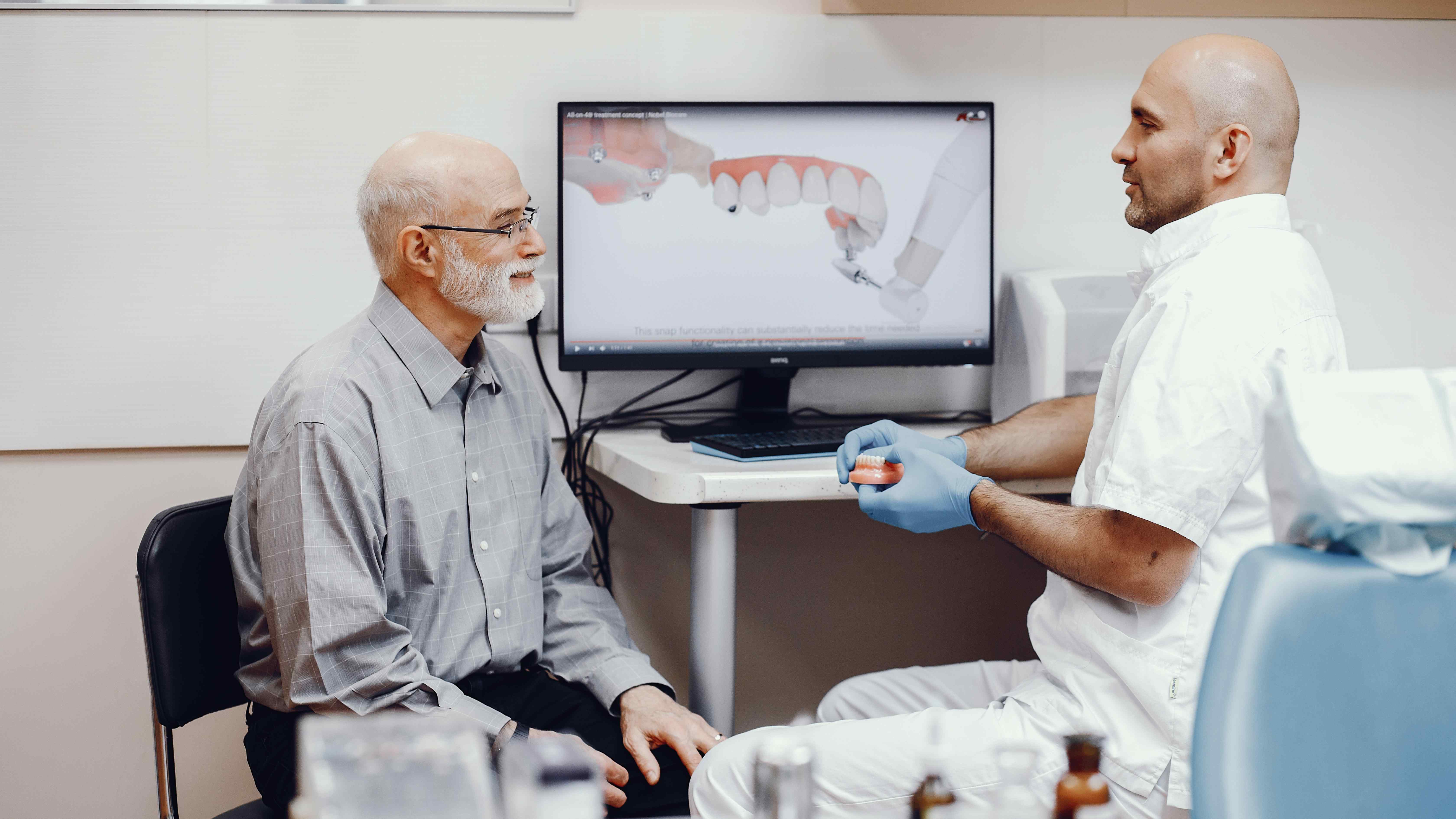
Image by Freepik
Surgeon recounts changes in field over 40-year career — from titanium screws to bone regeneration — as he accepts Goldhaber Award
Celebrating 40 years of progress in the field of dental implant surgery, the Harvard School of Dental Medicine honored Daniel Buser — University of Bern Professor and Harvard visiting lecturer — with the Paul Goldhaber Award on Monday. While accepting the honor, the most prestigious granted by the Dental School, the renowned dental surgeon gave an address that spanned both his academic career and the advances in the field, four decades “of pioneers and big breakthroughs.”
Since 2000, Buser said, dental implant surgery has become both “routine” and “highly successful.” Nearly 3 million American have dental implants, a number that is growing by 500,000 annually, according to the American Academy of Implant Dentistry. Despite a trend toward older patients, with good hygiene (and a warning to “not smoke too much”), the procedure has success and survival rates of 95 percent and 98 percent. “Much better than conventional prosthetics,” said Buser. “Better than hip replacement.” He added the field has cut the number of surgical interventions, decreased pain and morbidity, and shortened healing and treatment times.
Over his career, Buser saw a “paradigm shift” in the surfaces of surgical dental implants. While the earliest implants were anchored by a smooth, polished titanium screw (known as the Brånemark surface after Swedish researcher Per-Ingvar Brånemark), the field trended toward “micro-rough” surfaces after research found that they reduced average healing time and failure rates.
▍Dental implants have success and survival rates of 95 percent and 98 percent. “Better than hip replacement.”
-Daniel Buser
The next big breakthrough, explained Buser, was guided bone regeneration, which uses barrier membranes to direct the growth of new bone around an implant. In Bern, he said, the first clinical case, involving the extraction of a premolar replaced by an implant, “worked very nice.”
The technique did have complications, however. Collapse of the membranes and difficulties in healing set off a search for better materials. With research on miniature pigs, “We learned very quickly we needed something to support the membrane.” The answer? Two different fillers, the so-called composite graft, which has now become standard.
Further research has revealed that the placement of the implant has an impact, as does the so-called micro-gap, the space between the various components of the implant. Looking at “possible ways to minimize or eliminate inflammation,” said Buser, “you want to either decrease or eliminate the micro-gap, seal it, or you can physically move the micro-gap up,” higher on the jaw, which reduces the chance of inflammation and bone loss.
Another advance has been bone conditioning, which uses a patient’s own bone chips. Bathing the chips in a mix of the patient’s blood and an isotype bath known as Ringer’s solution to avoid clotting prompts the bone chips to release a growth factor. “We have seen that two of the most important growth factors can be detected very quickly,” he said, opening up more options for healing.
Such advances have been aided by the introduction of cone-beam-computed tomography, a volumetric scanning machine that provides 3D models and serves as a diagnostic tool. Now routine, “this gives us so much information.”
With so many options — such as whether to do immediate implant placement after an extraction or to wait — the current challenge is “all about case selection,” said Buser, noting that each case should dictate an individual approach. Adding that most complications are caused by poorly trained practitioners, he stressed the importance of the kind of teamwork that encourages both research and personal growth. “You have to have lifelong learning. You have to go to conferences to be updated.”
Speaking to a full house as well as an online audience, Buser also touched on being a mentor, a role shared by the late Goldhaber, who served as the dean of the Dental School for 22 years.
“For an academic career, you must have a good mentor,” said Buser. Naming such luminaries in the field as the late André Schroeder, professor of operative dentistry and endodontics at the University of Bern; Robert Schenck, whom Buser recruited to oral and maxillofacial surgery from his original field of orthopedics; and Ray Williams, P.D. ’73, a 2013 Goldhaber honoree and former associate dean for postdoctoral education and head of the Department of Periodontology at HSDM, he encouraged young academics to seek out those who could help them.
He also stressed that such collaboration is a two-way street. “You must be a good team player.” Noting the lessons learned from his own participation in the 1980 Swiss champion Bern handball team, he said, “You achieve much more with a good team.”




Post comments